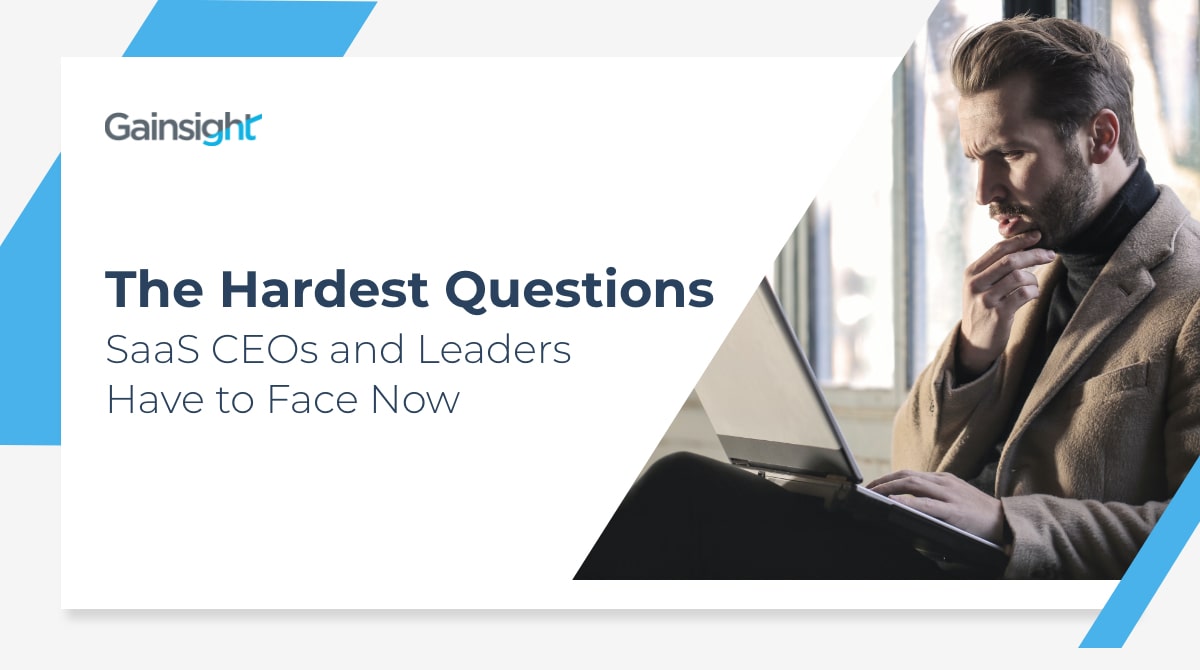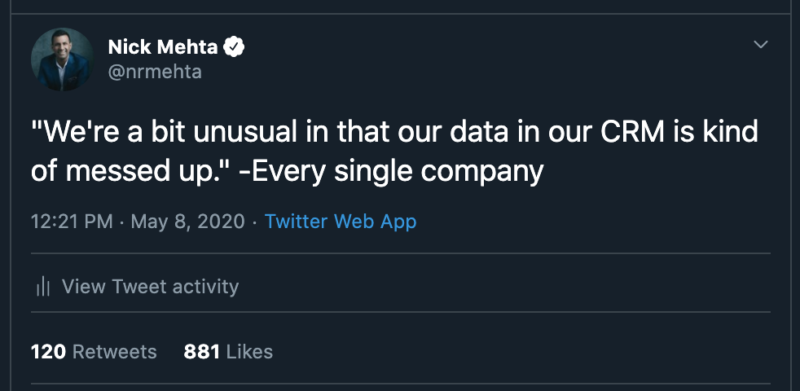

I don’t know about you but life these days is confusing. Every week is full of mixed signals. Case counts are dropping in some places. And they are flaring up in others. Therapies look promising. Until they don’t. The stock market is soaring. Yet unemployment is too. More than ever in the history of my 20+ year business career, I find myself asking the question “which way is up?”
And it’s within this context of historic uncertainty that CEOs and business leaders have to face the reality that (some) rebound is coming. This is mathematically-true since we dropped output to almost nothing, so we definitely know, in terms of the economy, that the only way from here is up—for now.
To paraphrase the late great CEO of Intel, Andy Grove, you don’t get to be a leader without being a little bit paranoid. So I’ll be open with my paranoia. What if we have a spike of cases in the fall? What if we have a second shutdown? What if the re-opening doesn’t drive the economic activity we hope? What if the Fed’s attempts to hold up the credit markets eventually fail? What if?
Software executives are faced with an almost impossible decision:
- Invest to scale and risk having to cut again during a rebound downturn
- Don’t invest for scale and lose market share
How do you thread the needle in this no-win situation?
I believe SaaS leaders are going to finally implement the playbook we espouse to our clients—namely that it’s time to “digitally transform” our go-to-market and allow us to scale without incremental hiring.
“Digital transformation,” you scoff? “I’m already digital—we are in the cloud.” So let me ask you five basic questions:
- CRM Data: Is your data in your CRM reflective of the reality of your business?
- Activity Visibility: Do you have real-time visibility into the activity of your go-to-market teams?
- Virtual Engagement: Is “virtual” customer engagement a core competency of yours or are you just running webinars?
- Product Telemetry: Are you happy with the information you have into your product’s usage and adoption?
- Customer Success Scale: Do you throw people at Customer Success or have you figured out how to automate and deliver “tech touch?”
In short, do your proverbial cobbler’s children have shoes? Don’t feel bad if the answer is no. You are in good company:

So what do you do to be ready for growing again in this world of uncertainty? Hint—I gave you the list above. In short, the savviest leaders are using the current slowdown to invest in initiatives to make them ready for re-opening. Specifically, they are taking the following 5 steps:
1. Get Your CRM Data Cleaned Up
It’s 2020 people. We have drones delivering stuff. Autonomous cars are coming soon. We might be on Mars before you know it. And yet many of us have fields in our Salesforce instance called “revenue,” “revenue1,” “old_revenue,” “final_revenue” and “final_final_revenue?”
Companies shrug off the problem by saying “yeah, our data is messed up,” as if the problem we are describing is rocket science. It’s not.
The smartest teams are using the slowdown to take a step back and make sure their business data is ready to take them forward.
2. Implement Process and Stop Running Your Team Like It’s the 1980s
Despite the futuristic technology we advocate for our customers, we run our customer-facing teams (Sales, Customer Success, etc.) like we are going back in time. We throw people at problems, don’t define a business process, and hope it all works out. We still run Sales and Customer Success like it’s an artisanal project.
The best companies are using this time to implement formal processes in Sales and CS and to track those processes. They are setting up standardized playbooks and using engagement tracking technologies like people.ai.
3. Become Great at Virtual Experiences
We’ve gone through the early phases of Zoom coping already. We were initially excited. Then we overdid it. Then we complained. Then we got worn out. Then we found the new normal.
Over time, we’ve learned about using chats, turning off the camera some times, going for walks, and the like.
In the same way, we as an industry need to get great at virtual customer engagement. How can we make sure our reps are enabled on virtual best practices? How do we continue to add creativity in this new world that can feel very repetitive? What can we do to make our online events feel like more than a webinar?
4. Act Like a Real Cloud Company and Understand Product Adoption
I remember running my first SaaS company in 2008 and being so excited that I could finally see how our customers used our product, after more than a decade of being blind in the on-premise world. Yet I was shocked to learn that even though firms were running in the cloud, they still adopted an old school mentality, relying solely on customer NPS forms and anecdotal evidence, versus deep product analytics.
The leading businesses will use the summer to make sure they have every part of their product experience instrumented, so they can understand adoption, onboarding, customer sentiment, feature usage, and the like without having to send out a single survey.
5. Scale Your Customers Faster Than Your Team
The bottom line is you need to find ways to get leverage. One of the biggest opportunities is the way you manage clients. You likely have ratios (quota/AE, ARR/CSM or customers/CSM, etc.) How can you use technology and process to stretch those ratios?
Many companies are rushing to tech touch to scale their customer journey? This has a triple benefit of (1) helping companies reach clients that they otherwise wouldn’t talk to, (2) driving more consistent customer experiences, and (3) offloading CSMs from manual and repetitive work. Similarly, how can in-product communications help complement CSM teams through messages delivered where the users are every day.
The famous proverb (or curse depending on how you read it) says “may you live in interesting times.” Check! In these uncertain times, one thing is for sure. The more leverage we can give our businesses, the better prepared we will be for any future scenario.



